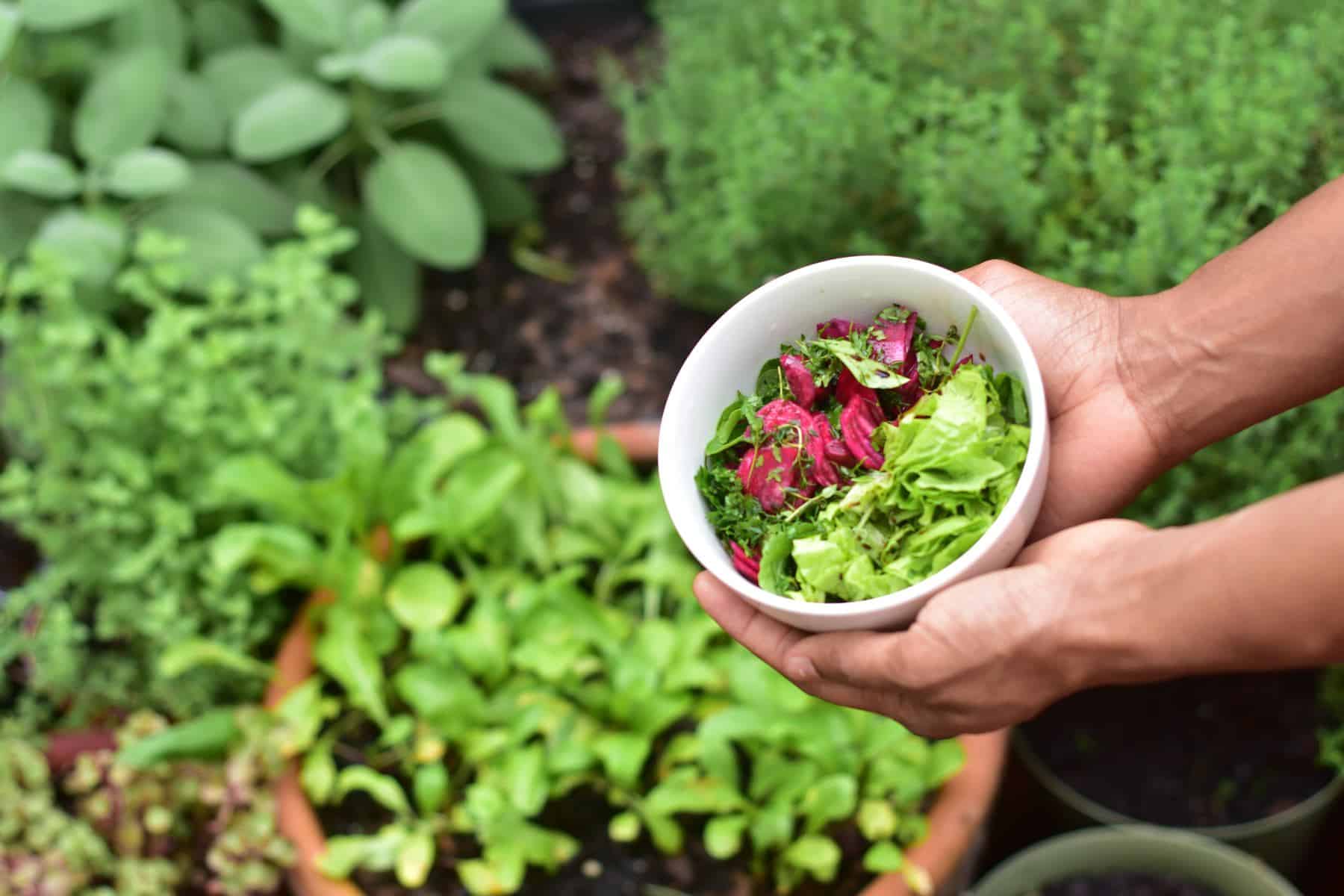by Michael Lein, Madison Weber, Elizabeth Gourlis, American School of Guatemala
This project has been nurtured through the love and dedication of three passionate teachers
from very different paths that fate brought together in Guatemala.
Each of us has a different story and background but our common thread is our fascination with and love for plants of all types. We could talk for days about how plants grow, where they grow, what they produce, as well as their styles, arrangements, and various life systems. Our individual strengths and passions that originally brought us together to create The HIVE — the garden initiative at the American School of Guatemala — have also enabled this initiative to thrive and inspire its community well into its second year.
Creating a School Garden
Within the first four weeks of joining the American School of Guatemala, we pitched the idea to administration of creating a designated space that would serve as a community garden. We imagined the potential that a living wall and garden space could present to our community, providing opportunity to teachers to utilize our beautiful campus in the design of hands-on science lessons, to administration to initiate conversation on climate and our impact on the surrounding environment, and to students to observe, understand and appreciate the systems required to produce the food we thoughtlessly consume on a daily basis.
We were given space to start creating, but we received no budget as the previous year’s budget had already been established. We talked with as many stakeholders on campus that we could find — teachers, administrators, parent groups, students — to create an inclusive space that met the needs of its community members. We found old, rectangular raised beds that were used in a previous garden program in the Early Elementary section. After receiving permission to re-purpose the beds, we moved the beds to our new location. It was imperative to us to build upon the work of those that had come before when constructing this gardening initiative.
When stakeholders would ask our reasoning for using these older, rectangular beds, we would explain our intention to recognize previous gardening efforts by teachers at CAG and our desire to incorporate their work into our initiative to both pay homage to their work and to utilize the resources at our disposal to get started right away. We received dirt to fill these beds and we were on our way.
Garden-Based Learning for Students
From the get-go, student buy-in was our highest priority — as our entire motivation for starting this initiative was getting students working in the dirt. So, we started a Garden Club. Garden Club launched with high school students that designed the arrangement of the raised beds in our gardening space, filled the raised bed with the provided dirt, and started conducting experiments on what seeds would grow in Guatemala in “winter.” We opened up our club to elementary students and we grew more plants, experimented with “kitchen scraps” and micro-greens — a growing process we learned about from trips to a local, organic farm.
Students in Garden Club documented their observations about plants, weeds, succulents and our experiments; harvested, prepared and sold salads to the school at large from the produce we grew; and investigated succulents in order to learn how to best propagate them.
We also extended invitations to classroom teachers to visit The HIVE with their classes, and were thrilled to welcome many elementary classes to the HIVE for both science and composting lessons. Moreover, we had the opportunity to visit a few classrooms ourselves, bringing discussions of climate and the dynamic impact that plants have on our world to students and teachers alike. The HIVE also made a concerted effort to reach those students not interested in visiting the garden space itself by offering the high school student body two challenges. It was our hope that these contests would help to create buzz and buy-in for The HIVE, especially from middle and high school students.
The first challenge prompted two 11th grade AP Calculus classes to calculate and design a raised bed shape and overall raised bed arrangement in our garden that would optimize our gardening space while still ensuring ease of access for small children and overall aesthetic. The second challenge asked students to create signage to ensure the community would better understand what we were growing, creating and designing. The final results of both challenges were fantastic, student-driven projects that the community is still talking about.
Growing a Community of Stakeholders
As we still had no budget by the middle of our first year, we held a bake sale and used our own money to purchase kid-friendly tools and create classroom garden kits. We called on our stakeholders to design a logo, bake for us, design posters for us and provide us with succulent cuttings. When our first year came to a close, the school provided us wood to create hexagonal raised beds (the shape of which was based on the winning entry of our first student challenge). We bought a drill, saw and the necessary hardware, and used time during our summer vacation to assemble our hexagonal beds and bring our students' design to fruition.
Leading into our second year, we added composting to the list of HIVE projects. We presented to the entire faculty on the benefits and do's and don'ts of composting, ran hands-on composting workshops and have enlisted the help of the community in our efforts to make our campus more eco-friendly, increasing our school's composting and recycling efforts across all sections. This project has allowed us to talk to students and teachers alike about how much waste we produce, serving as an eye-opening experience for us as well as for the community.
Enriching Students, Planting Roots
We are off to an exciting start this year. We have visited classrooms (at teacher's requests), to teach more staff and students about composting their food. We have received requests from new teachers to be involved in various aspects of the HIVE, such as Garden Club and other recycling initiatives happening on campus.
Although it may be dim, we are starting to see more of a spark on our campus. More and more students and staff are asking how they can support not only us, but in making this Earth a greener place. This spark is what we need to grow community-wide support for green initiatives at our school. With this spark, we hope to leverage momentum to reduce plastic usage, to purify water, and to alter our oil dependence to a renewable resource here in Guatemala.
Through the HIVE, we strive to empower our students to be a part of this change and grow into adults that can positively impact the community they live in.
[box] FariaPD supports teachers and leaders around the world with hands-on, active and creative professional development experiences. Join one of our online or in-person professional development events, each designed to support the unique goals of your school or district. FariaPD is part of Faria Education Group, an international education company that provides services and systems for schools around the world including ManageBac, a curriculum-first learning platform, OpenApply, an online admissions service, and Atlas, a tailored curriculum management solution for schools. [/box]

ABOUT THE AUTHORS
Michael Lein teaches Kindergarten at the American School of Guatemala. Originally from the midwestern United States, he has always been exposed to farming, gardening and the wonderful benefits that such practices produce. Since deciding to study education, he knew that some of his personal focuses in instruction would be the importance of nature, environmental best practice, and school gardening.
Madison Weber works as a Learning Support Specialist at the American School of Guatemala. Originally from Knoxville, Tennessee, Madison is passionate about giving a voice to students who have difficulty in the traditional classroom, and connecting with students through gardening and the outdoors. She serves as the middle school liaison for her school's gardening initiative, The HIVE.
Elizabeth Gourlis teaches high school science at the American School of Guatemala. In the various places she has worked and lived, she has always participated in a community garden — and was once a former apiarist. She has worked with three different school gardens, and established two school gardens for over 1200 students. "The willingness and readiness of students to get dirty, learn the science behind gardening, as well as being excited to share the produce they grow and what they learn — that's the magic that keeps me involved in school gardening."

